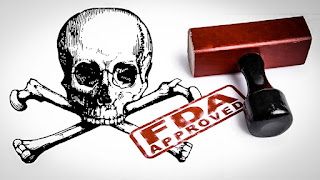EpiPens And Pharma Bros Are No Accident: How Government
Colludes In Big Pharma’s Chicanery
By Kurtis Bright
The Free Market Isn't Really Free: How Big Government And Big Pharma Are in Bed Together
When controversies occur like the disgusting and absurd
EpiPen price hike of 600 percent last year, the coverage follows a common
pattern: we (led by the media) cycle quickly from horror, to outrage, to
disgust, to shrugging our shoulders and moving on to the latest celebrity
scandal in quick succession.
Somewhere in the mix, toward the end of the cycle, some
corporate talking head or another on some finance program will utter some
insightful nugget along the lines of, “Well, that’s capitalism for you. Nothing
to be done.”
There’s nothing to see here folks. It’s just the invisible
hand of the free market at work. Move along now.
The thing is, that isn’t really true. Things like this don’t
happen in a vacuum; there are no accidents, not anymore. Events like these, as
can be easily demonstrated, are the end product of years if not decades of
meticulous planning, carefully nurtured relationships with elected leaders, and
the shameless cultivating of regulators--who often hail from the ranks of the
Big Pharma companies in the first place.
And let’s be very clear here: Big Pharma spends big bucks on
lobbying not out of a starry-eyed love and admiration for our electoral system
and the octogenarian rock stars peopled therein, but rather in order to get
laws crafted just the way they want them to be. All together, pharmaceutical
companies have spent nearly a billion dollars, about $880 million on lobbying
congress over the last decade. That’s more than eight times what the gun lobby
has spent over the same time frame.
And when it comes to one of the great health-related
tragedies of our times, the opioid crisis, the lobby promoting the approval,
sale and use of the drugs has spent 200 times more than have groups calling for
stricter prescription guidelines for the drugs. Even seemingly common-sense
efforts to slow the tidal wave of the opioid scourge--for instance a New Mexico
bill that would have limited initial opioid prescriptions for pain to seven
days--have been bitterly fought by companies like Purdue Pharma, makers of
Oxycontin.
And consider the case of Mylan, the now-notorious company
behind the EpiPen and its appalling price-hike: that company’s deep connections
to government read like a how-to guide to crony capitalism. After purchasing
another company that created the EpiPen design, Mylan refined it and patented
it, swatting down a series of other companies who sought to create their own
version via a series of FDA interventions.
The fact that the company’s CEO Heather Bresch is the
daughter of West Virginia Senator Joe Manchin didn’t hurt the company’s
prospects one bit. Nor did it stand in the way of the company’s efforts to get
laws passed that required EpiPens to be stocked in every school in the country.
Conveniently, these supplies have to be replaced every year, and of course
Mylan is the sole company licensed to make them, thus creating an unbelievable
and constant revenue stream for the company.
Yet another way Big Pharma manages to tilt the playing field
in its favor is through patents. By taking a successful drug and tweaking the
formula slightly when its exclusive status is nearing an end, they are able to
buy themselves another five to seven years as exclusive manufacturers, with no
competition from generic versions available. And regulators--who are often on
the boards of Big Pharma companies themselves, or who are former employees--are
often the people responsible for granting these renewed patents. Thus another
never-ending revenue stream is created.
So next time you hear someone say, “Oh it just how the free
market works” in response to the latest Big Pharma scandal--and there will be
another and another soon enough--perhaps take a moment to explain to them the
difference between cronyism and capitalism. The free market isn’t really free.
At least in pharmaceuticals--everybody pays and the fat cats
atop the Big Pharma pyramid get fatter along with their lapdogs in Congress and
the regulatory agencies.
###








